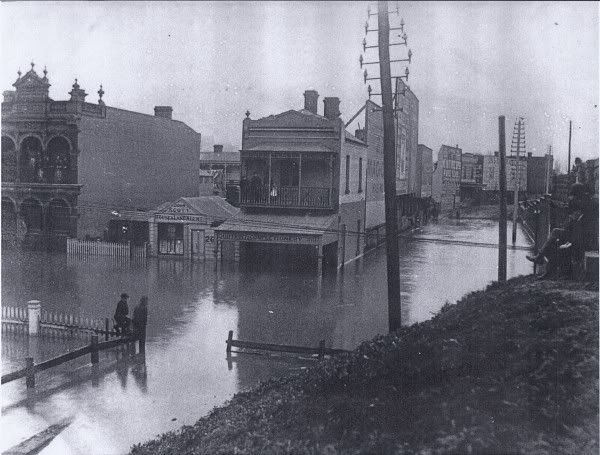Historical weather records tells us stories of extremes.
I just wonder if Melbourne is ready for history to repeat itself.?
http://www.theage.com.au/articles/2003/ ... 07154.html" onclick="window.open(this.href);return false;
"It was a torrential downpour that only lasted about 17 minutes,"
The 1972 flood in Elizabeth Street, captured by Walkley Award-winning Age photographer, Neville Bowler.

"We got half way down Bourke Street and couldn't go any further - the street was underwater. I said to my brother, 'Here's my wallet. I'm going out to get some pictures.' I walked through the old State Bank building and got down in the water and started snapping away."
Bowler says all the pedestrian walkways around Degraves Street were flooded out, and people were opening their car doors to let out the gushing water. After taking his photographs, with the waters continuing to rise, Bowler found himself stuck in the middle of a raging torrent.
"Another photographer on the scene, I think his name was Peter, pulled me out by my arm," recalls Bowler.
The famous image of the Elizabeth Street flood ran on the front page of The Age the next day.
Here are some more 'snip-its' of our past, taken from the link above
The most significant flood in Melbourne's recorded history, now referred to as the "great flood of 1891", occurred after two days and two nights of rainfall, and caused the Yarra to swell to 305 metres wide.
According to The Age report from the time, 3000 people, mainly in the inner-city suburbs of Richmond, Collingwood and Prahran, had to vacate their houses and two large lakes formed on the east and west sides of Chapel Street.
"The flood arose so rapidly in the night that one resident reported plunging his arm into water as he stretched, awaking to the real danger of being drowned in his bed,"
In 1934, ferocious storms caused widespread destruction throughout the entire city. Eighteen people drowned, including one in the Yarra, and 6000 were left homeless.
"In the great flood of 1891, there's the story of a man who spent several days literally just rowing between houses to save people from the upper levels.
As if floods didn't pose enough of a threat to developing Melbourne, fire was an ever-present danger, as in 1897 when a great fire reportedly destroyed the entire block between Swanston and Elizabeth streets, and Flinders Street and Flinders Lane.

